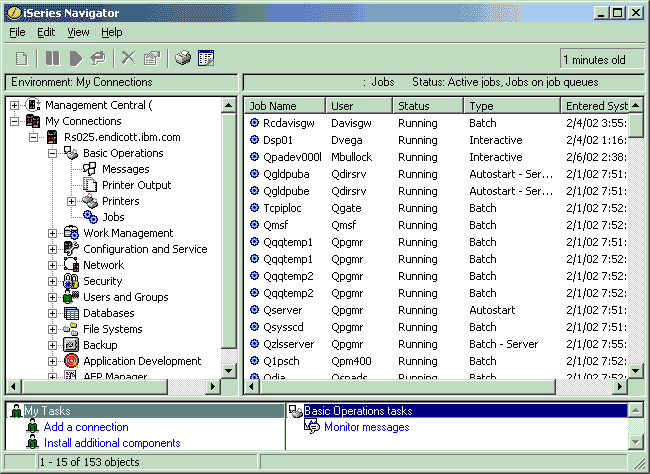Jobs
All work done by the operating system is divided into units called jobs. Jobs are how the operating system organizes, tracks, and processes work.
A job typically includes all of the information the system requires to complete a specific task. This information might include data files, programs, and instructions for processing and tracking the job throughout its processing. Jobs vary greatly in their complexity, ranging from simple tasks, like printing a specified document, to complex procedures, like generating reports based on information spread throughout the system. Tracking and managing jobs is an important part of normal system operation.
Jobs are an essential part of work management. To learn more about how jobs are processed, including working with subsystems and job queues, see The structure of your system. For an example of how jobs move through the system, see A job's life.
Working with jobs
You can work with jobs in System i® Navigator. Jobs in the Basic Operations folder displays all the jobs associated with the current user. To display other jobs, right-click the Jobs folder, and select . The Server Jobs - Include window allows you to limit the list of server jobs displayed in the System i Navigator window to those that meet the criteria you specify.
Alternately, you can see the jobs submitted by the system by clicking , or view the jobs currently being processed by clicking .
The following display shows the jobs in System i Navigator.

After finding the jobs you want to work with, you can display their attributes or change their queue, priority, messages, and other features by right-clicking the job and clicking Properties. Additionally, your system administrator might decide to set up a job monitor to work with some jobs.